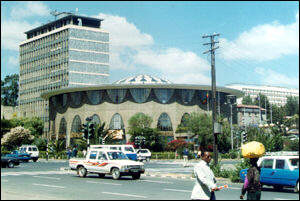Poor Infrastructure Overshadows Remittance Boom
 Addis Ababa, Ethiopia - Hana Mesfin, 27, works as a secretary for a private company, earning a monthly salary of 900 Br. This, for her, is nothing more than pocket money.
Addis Ababa, Ethiopia - Hana Mesfin, 27, works as a secretary for a private company, earning a monthly salary of 900 Br. This, for her, is nothing more than pocket money.
Fortune met Hana on Monday September 2, 2013, at the Commercial Bank of Ethiopia (CBE) branch around Senga Tera, on Ras Abebe Aregay Street. She went there to receive 200 dollars sent from her cousin for the coming Ethiopian New Year.
She lives with her five-year-old son, her mother and two of her cousins. Every month, most of her salary goes on covering food expenses, which forces her to rely on her cousin.
‘‘Thanks to my cousin, who lives in the US, I don’t have to worry about whether my salary will cover my bills and expenses,†Hana told Fortune, while waiting for her turn at the Bank.
Unfortunately, at this time the money had not been delivered and she couldn’t make the receipt because of a network failure at the Bank.
This is one of the problems encountered by the remittance industry in Ethiopia, which is perhaps expected to be larger than the export earnings of the country in its foreign exchange generation capacity.
Despite the difference between the official remittances data compiled by the government and different international organisations, like the World Bank (WB), remittance flows represent a significant share of the national income. Read more



